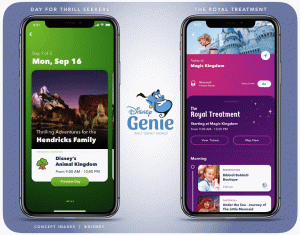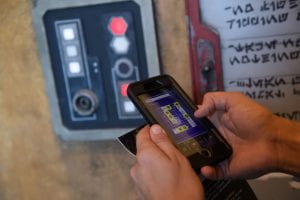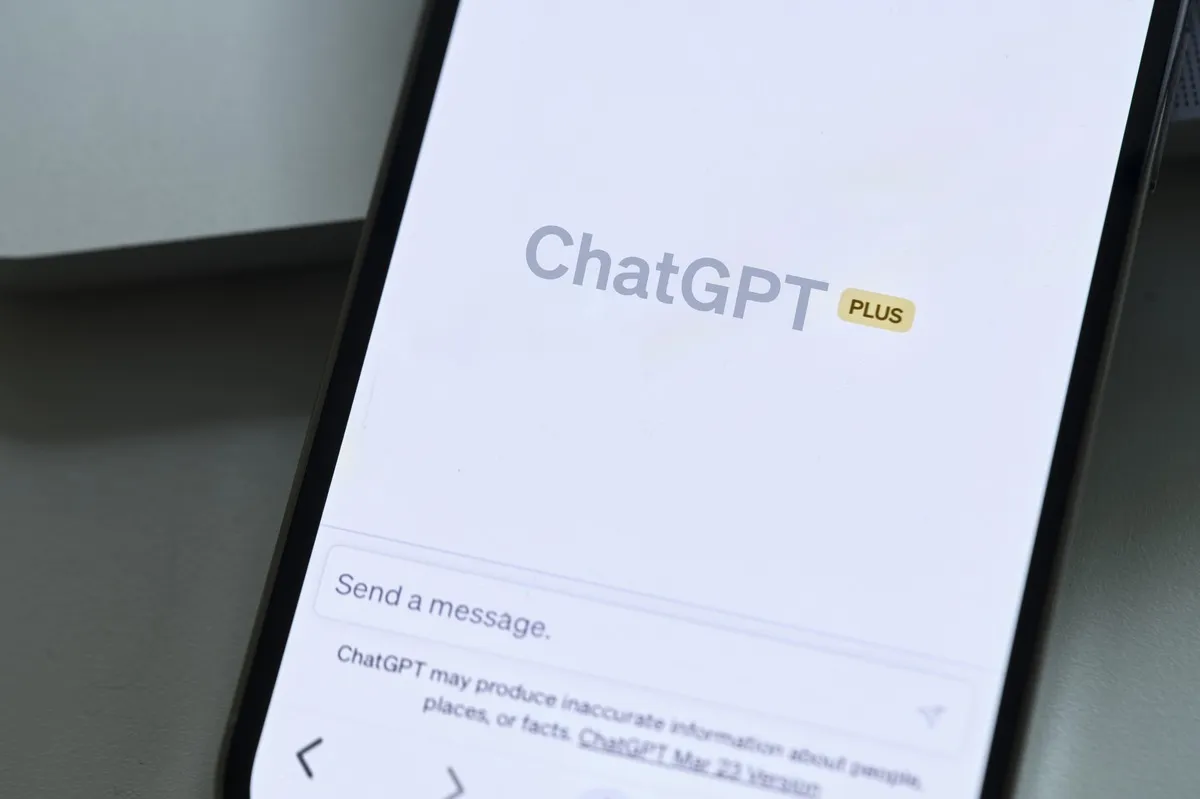Disney Parks Plan to Greet Returning Guests With New Digital Tech for Phones
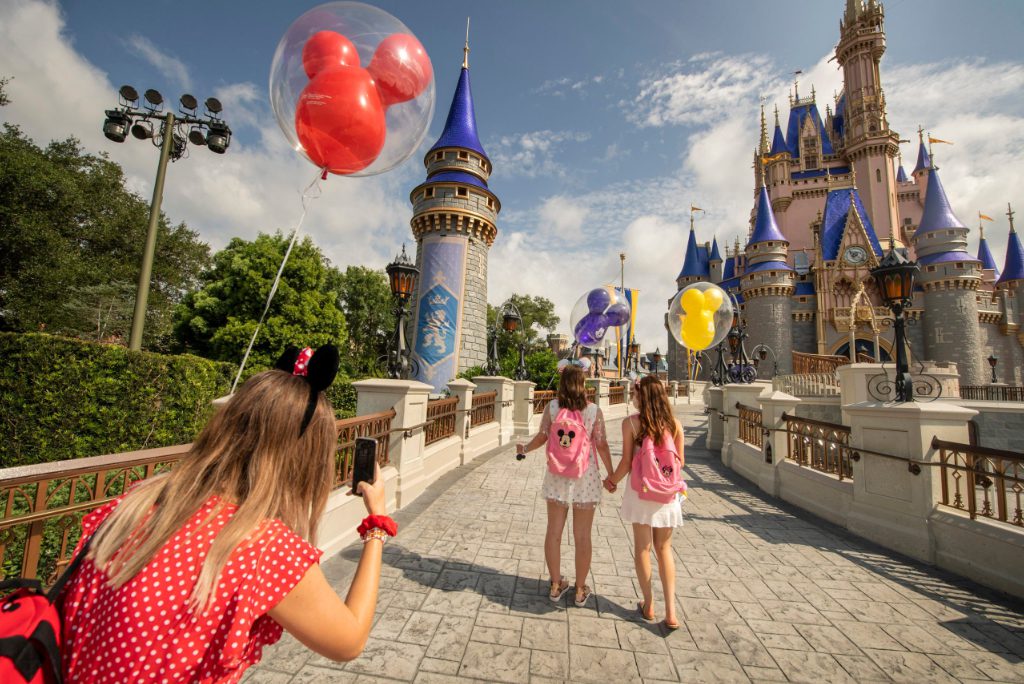
Skift Take
Walt Disney Company has for decades been wowing guests with tech-savvy attractions at its U.S. theme parks. But the company has been seeking to innovate with technology beyond their rides and animatronic robots to become more personally relevant. As a result, Disney has been increasingly finding ways through mobile digital technology to engage with guests throughout their stay — and even before guests arrive.
"We've got these amazing physical environments," said Gary Daniels, vice president of Disney's digital experience. "But we have a tremendous opportunity to have guests connect with us in ways that are better and different from what they're used to."
This month guests are returning in large numbers to Disneyland Park in Anaheim, California, which had sat closed for months, and to Walt Disney World in Orlando, Florida, which had limited operations during the crisis. Many visitors will have more one-on-one digital interactions between themselves and the parks than before.
Exhibit A is a partnership with the social media company Snap. This month, the Snapchat app added augmented reality "lenses" featuring Mickey Mouse and Minnie Mouse. Visitors to Walt Disney World Resort can use the app to take selfies with digital replicas of the two famous animated characters. The lenses will only appear for guests physically at the parks, thanks to the location sensors in guest phones.
The Snapchat project is an example of the theme park operator seeking to engage with guests one-on-one rather than just with crowds.
Another mobile-first example is coming "soon" and is called "Disney Genie." Guests will be able to use their mobile phones to share their interests – such as a princess-themed day at Magic Kingdom Park or a gastronomic themed trip to Epcot — and Disney’s "genie" will provide customized itineraries that solve the planning dilemma of the ideal order or timing of an itinerary. The tool will offer a few curated itineraries with lots of visual help to help guests make the most of their vacation.
"Those are examples of how we never want to do technology just for technology's sake, such as augmented reality just because augmented reality is hip," Daniels said. "We don't want the technology to be in the forefront of the guests' minds. Technology must instead be an enabler for providing the guest the experiences that they want with more flexibility, more convenience, and more magic."
Better Mousetrap
The tech moves by Disney Parks come when it and other out-of-home entertainment companies warily eye broader technology trends. Many home entertainment systems and mobile devices, such as Facebook's Oculus virtual reality headgear, are becoming more sophisticated and captivating. They're potentially sapping interest in real-world experiences.
One challenge is how to use mobile tech without making screens the whole show.
"We want to make sure that we're providing 'heads up' experiences," Daniels said. "We want great immersive environments, but we don't want it to be all about a screen."
One example is that Disney Parks has been introducing video games that can be played on guests' phones while waiting in line. The games are thematically tied to the rides.
Here's how it works: Guests download the Play Disney Parks mobile app. Let's say they're riding the Star Wars: Galaxy’s Edge attraction at Disneyland or at Disney's Hollywood Studios in Lake Buena Vista, Florida. Those guests will be able to play a themed game called "Star Wars: Datapad."
Behind-the-Scenes Tech
Disney Parks executives also focus on using technology behind the scenes to improve operations.
"We have something we call a guest service suite, which is a set of software technologies that help a cast member perform their role and support anything they need to do to help to help the guests," Daniels said.
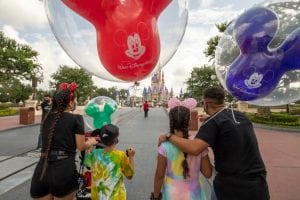
Guests stop to take a photo at Magic Kingdom Park, July 11, 2020, at Walt Disney World Resort in Lake Buena Vista, Fla., on the first day of the theme park’s phased reopening. Kent Phillips, Photographer. Source: Disney
"People in the industry talk about 'service recovery' [meaning the process for responding to a dissatisfied customer],'" Daniels said. "But we're reaching for something different, which is 'service discovery.' We want to find out about a problem before it becomes a problem."
At some of the resorts in Disney Parks, staff no longer stay behind front desks to use computers but instead use tablet devices on the go. The company claims to have put a lot of thought into the user interface for these tablets to make it easier for staff to interact with guests, asking personal and conversational questions.
"Cast members are the secret to our success," Daniels said. "So we want to help them shift their focus from guest transactions to guest interactions."
Connecting With Guests Beyond the Park
The tech innovations at Disney Parks are inspirational to many executives at other travel companies, including airlines and hotels that don't run theme parks. Disney's sophisticated approach to tracking customer behavior from end-to-end — such as with its Magic Band wristbands that guests use for digital payments and other interactions — paints a fuller picture of traveler behavior and interests than many other companies see.
For example, Disney Parks increasingly want to connect with guests before they arrive.
"I've seen research that, for a lot of people, some of the best parts emotionally of the vacation are the looking forward to it," Daniels said.
So the company introduced Disney Magic Moments as a way to let guests savor their anticipation by discovering Disney recipes or seeing behind the scenes looks at its animals or its so-called Imagineers.
Disney sees digital encounters like these as layering on top of the core park experience.
"Arthur C. Clarke has a point which you probably heard before that 'Any sufficiently advanced technology is indistinguishable from magic,'" Daniels said. "A lot of what we're about at Disney is magic, and so we always look at tools like Snapchat's AR [augmented reality] as being in the service of magical experiences and storytelling. Minnie hugging you in a digital photo can be magical."

